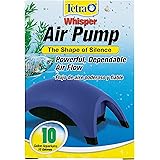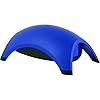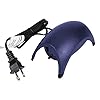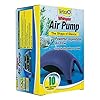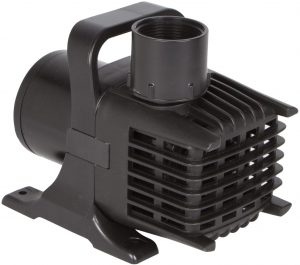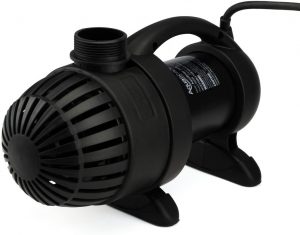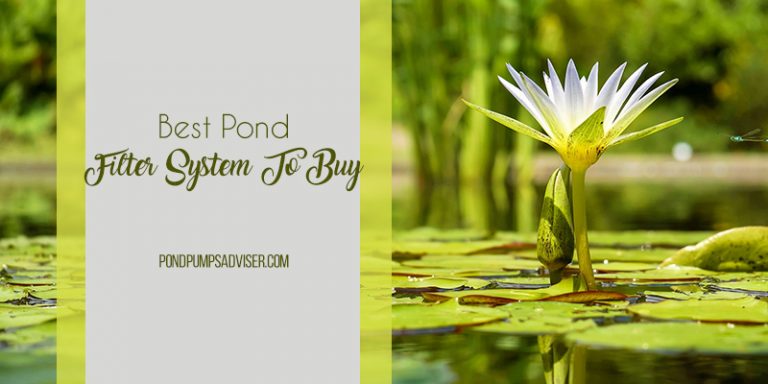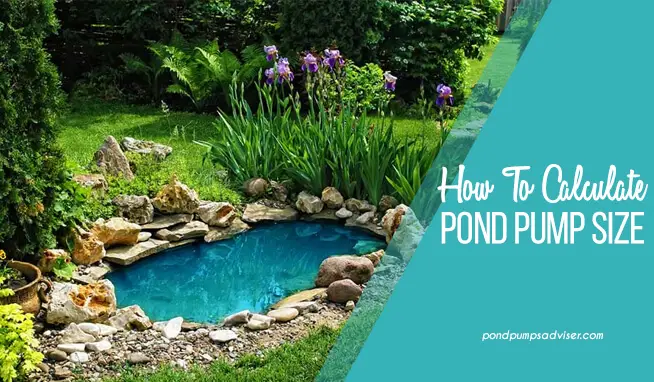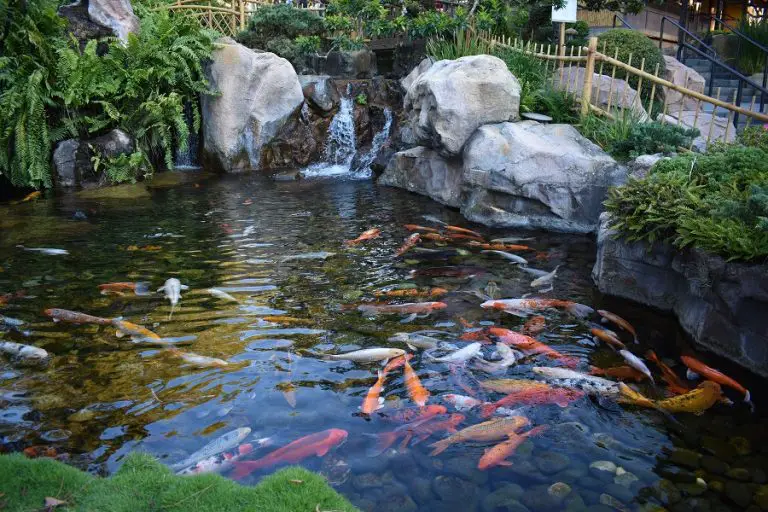Knowing how to reduce the flow rate of the pond pump is something you will need to learn if you already have or intend to get a water pump.
You may get the perfect one, but you may also encounter that calls for someone that knows how to reduce the flow rate of the pond pump and you can’t always depend on other people for this.
Amidst the green lush that you have in your farmhouse or backyard, you definitely picture a beautiful fountain sprouting from your pond. A mystical scene that would seem straight out of a fairytale.
The serenity that the sound and the beautification of water combined with the greenery around can bring to the soul is unmatched by anything else. But owning a waterfall pumps may come with a lot of challenges that may push you to learn things that you didn’t think you would ever need to know. For instance what to do if your pond pump is too strong?
To make the homecoming of a pond pump easier you must know a few things and don’t worry, you will leave here with all the answers.
What Do You Need to Know About Water Pumps?
 Getting a water pump for your pond may be one of the best decisions you make for your pond. But for that, you need to at least be aware of the basics of the water pumps.
Purpose of a Water pump
There are two basic purposes of water pumps: aerations and decoration.
Aeration: The pumps that serve this purpose are built to re-oxygenate the water of the pond to keep it clean and fresh.
Getting a water pump for your pond may be one of the best decisions you make for your pond. But for that, you need to at least be aware of the basics of the water pumps.
Purpose of a Water pump
There are two basic purposes of water pumps: aerations and decoration.
Aeration: The pumps that serve this purpose are built to re-oxygenate the water of the pond to keep it clean and fresh.
Decorative: These pumps are more about appealing the visual senses than they are for the pond. They do have some aeration quality but are exclusively built to add an aesthetic to the pond itself.
These usually have different display properties such as different patterns using different nozzles for each.
A waterfall pump usually serves both of these purposes very well. While they may or may not have different nozzles, the waterfall surely adds beauty to the pond and also oxygenates as it falls down the higher point.
Types of Water Pumps
There are two basic types of water pump: external and submersible.
External pond pump: These are placed on dry land close to the pond. They usually have large gph and are suitable for larger ponds. They are usually easy to maintain but the motor makes a sound.
Submersible pond pumps: these are placed inside the pond itself. They are compact and are usually best suited for small to medium ponds. They aren’t as easy to maintain but are quieter in their operation.
A waterfall pump can be an external pond pump or submersible pond pump, depends on the need of your pond. Submersible pond pumps are preferred by people who don’t want the pump hindering the visual beauty of the pond.
About the Waterfall Pond Pumps
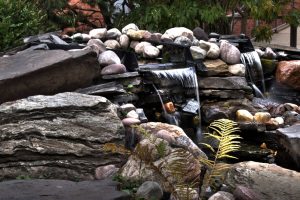 A waterfall pump at the side of the pond beautifully cascading water down the stream is an ideal of many pond owners, and why would it not be? The beauty and tranquillity that it brings are even enhanced by the aeration skills that it displays.
Water Discharge: A waterfall pump discharges water as a wide stream from a high point. This stream starts up top and beautifully pours down with grace and is collected at the lower point.
A waterfall pump at the side of the pond beautifully cascading water down the stream is an ideal of many pond owners, and why would it not be? The beauty and tranquillity that it brings are even enhanced by the aeration skills that it displays.
Water Discharge: A waterfall pump discharges water as a wide stream from a high point. This stream starts up top and beautifully pours down with grace and is collected at the lower point.
Head Rating: Waterfall pumps are usually rated depending on the head differentials they can handle. Since there is a difference between the impeller of the pump and the point where the water stream is being discharged, it has meters of tubing between the two points. This makes the head rating absolutely important.
Fluid Mechanics: Once the water is poured down, it is collected at the lower point. It is then pushed up to the elevated level against gravity. This requires the help of magnetic poles and extra winding to overcome the pull of gravity.
Pond Boss Waterfall Pump
Salient Features
- Waterfall Creation: Designed specifically for creating stunning waterfall features.
- Easy Maintenance: Simple to clean and maintain for long-lasting use.
- Sturdy Build: Constructed for durability and lasting performance.
Beauty, peacefulness, and no water stagnation – all of these in just one waterfall pond pump. But to keep that up the waterfall needs to keep working at all times, and keep the water going from up to down and then back up.
But not every pond is constructed the same way. And there is a certain amount of power that a waterfall pump requires to keep the water circulating against the gravity. Moreover, if you require a wider or taller waterfall, that requires even more power for the pump to work without breaking down or failing to perform.
That is why you need to be able to pick the right waterfall pump for your pond. Here are some of the factors that determine which waterfall pump is right for you.
- Width of the Waterfall: This is a pretty simple one. There are two ways to determine the width of the waterfall.
If you have the waterfall: you can simply measure the width from one edge to the other in inches. You have to do it for all sides if you have a multi-tier waterfall.
If you don’t have the pump yet: you can simply enact a spillway and measure the break of the waterfall.
Note down the number of inches.
- Water Flow of the Waterfall: The waterfall is selected in the base of the kind of sound it creates. There are three different kinds of water sound available: trickle, Niagara, and sheet.
Trickle: a trickling waterfall will release water in short breaks that would create the sound of water dripping sound. For this multiply the noted number by 50.
Niagara: this, as the name suggests, will have a heavy flow of water flowing down like a huge waterfall. For this, multiply the noted number by 200.
Sheet: this refers to the waterfall that releases water in a smooth way creating the sound of the water flowing effortlessly. For this multiply the noted number by 100.
As you multiply the numbers, you will get the optimum Gph for your waterfall pump.
- Height of Waterfall: To determine the height of the waterfall, you will need to measure the distance from where the pond pump will sit to the surface of the pond. This distance will be measured in feet. You need only to measure the vertical distance here. The average height of the waterfall is usually around 1 ft. to 3 ft.
multiply this number by 10, you will get two digit vale in feet and inches
- The distance of the Waterfall: this is determined by measuring the tubing of the pump in feet. It starts from the top to the end. This step actually measures the water-resistance caused by the flow against gravity.
After you measure the tubing, multiply the number by 10. You will get and add that number to the height of the waterfall. You will get the value in feet and inches.
You must now have the GPH of the pump and the height of the waterfall in feet and inches.
Atlantic Water Gardens TT2000 Energy Efficient Pond & Waterfall Pump
Salient Features
- Energy Efficiency: Engineered for efficient operation, saving on energy costs.
- Dual Purpose: Suitable for both pond circulation and waterfall creation.
- Low Noise: Operates quietly to maintain a peaceful outdoor setting.
Here are some tips that can help you control the flow rate of your waterfall pump.
Get a Waterfall Pump with a Water Flow Regulator
First and foremost, get a pump that has a pond pump flow regulator so that you have control over the flow rate of the waterfall and can adjust it according to what your requirement and mood is.
Place Big Obstacles in the Way of the Water Flow
If you already have a waterfall that doesn’t have the feature, don’t worry, it can still be fixed. You can still slow down the water flow by placing certain obstacles in the path of the water flow.
These obstacles can be bigger rocks or some kind of potted plants. They will break the flow of the water and decrease their speed by a considerable amount. A bigger and higher number of obstacles you use, the slower the flow rate will be.
Remove Any or All Obstacles from the Flow Path of Water
Placing the obstacle decreases the rate of water flow of your waterfall water pump. But what to do if you need to increase the rate of water flow instead? Simply do the opposite of what we mentioned before.
In a waterfall pump, there are naturally some obstacles placed in the way of the water flow, even if you haven’t deliberately placed any by yourself. To increase the water flow rate in such a situation all you need is to simply remove those obstacles from the path and let the water flow uninterrupted.
Switch to a Waterfall that Pumps Fewer Gallons per Hour
You didn’t know what pump would suit your pond and you got one without an idea. It is natural for you to have made a mistake and gotten one that is way stronger than the one you needed.
Placing objects ca only work for so long, ultimately you need a better more permanent situation. So what exactly do you need to change? It’s the gallons per hour that your waterfall pumps.
Simply switch to the one that pumps a lower amount of water gallons per hour for your pond and you will get the slower flow rate you couldn’t get otherwise.
Switch to a Waterfall that Pumps More Gallons per Hour
Just like you can make a mistake of getting a waterfall pump with a higher gph, you can also make the mistake of buying a pump with a much lesser gph.
And since you didn’t get one with a regulator, you have to resort to other methods. What to do when you the flow rate doesn’t come up to the par even after you remove all the obstacles? You need to switch your water pump.
Simply switch to one that has a higher gph and you will have a faster flow rate in no time.
Change the Size of the Pond Piping
If you narrow down the size of the piping the water will not be able to move without effort and this will decrease the water flow rate.
However, in order to increase the flow rate, you can use piping as large as the opening on the pump itself. This will help the water flow at a much better rate since it will not lose any momentum to resistance
How to Slow Down a Water Pump?
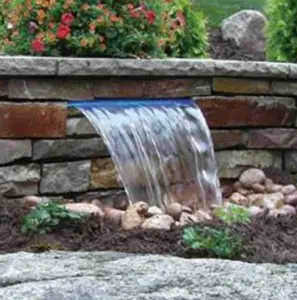 A waterfall pump brings with it a feeling of lush, peace, and beauty. It brings coolness to the eye, ears, and mind. But in the event that you get a waterfall pump that is too fast for your pond, it can ruin the whole ambiance of the scene.
A waterfall pump that has a flow rate that is too strong for the pond can have a very unpleasant effect. Not only does it keep the water getting all stirred up, but also makes the water muddy and dirty which can cause a problem not just for you but also the fishes living in the pond. So it will have a two-fold negative impact.
A waterfall pump brings with it a feeling of lush, peace, and beauty. It brings coolness to the eye, ears, and mind. But in the event that you get a waterfall pump that is too fast for your pond, it can ruin the whole ambiance of the scene.
A waterfall pump that has a flow rate that is too strong for the pond can have a very unpleasant effect. Not only does it keep the water getting all stirred up, but also makes the water muddy and dirty which can cause a problem not just for you but also the fishes living in the pond. So it will have a two-fold negative impact.
Moreover, unnecessary splashing may also cause you to lose a lot of water that you wouldn’t have lost otherwise. It will look very unfitting and unnatural to the eyes if the water gushes down the top instead of trickling down beautifully as it is supposed to.
If you are facing such a problem, you should learn how to reduce the flow rate of the pond pump. Here are a few steps that can help you slow down the water flow of your waterfall.
Look for a Pressure Adjustment Knob
There are a few waterfall pumps that come with water flow regulators. These are used to adjust the water flow of the pump according to your need and mood at the current moment.
First, you need to check if you can fix the water flow without any additional help. For which you need to check if the water pump comes with an adjustable knob. If it does, adjust the valve to control the water flow.
Turn the knob to decrease the flow rate, this will reduce the gusto with which the water is gushing out. This will fix all the relevant problems that you have with them.
Make sure that the pump is turned off before you adjust the knob. It can be quite inconvenient to keep turning the pump off and on till you find the optimum speed, but it is also safer.
Use a Waterfall Weir to Break the Flow
If you have a waterfall pump that doesn’t have an adjustment knob, then that is too bad but not hopeless. While it would have been an easier way to slow the flow rate, it certainly isn’t the only way. In such a case, you can always make use of a waterfall weir.
A waterfall weird is a type of tank that has four sides, three of them are high and one of them is flat that is set lower and has a ledge set on it. This ledge works to diffuse the water flow.
The weir slows the flow rate of the water by breaking its fall on a large surface and then spreading it around. If you already have a weir but it isn’t working so well then try replacing it with a larger and wider one. It will break the fall and slow the water more by spreading it over a larger area.
Use an In-line Ball Valve
This method is slightly tricky but very rewarding. Installing the in-line ball valve gives you immense control over the water flow.
In order to install it you need to follow these steps:
- Switch the pump off, safety first.
- Cut the PVC line closest to the pump using a hacksaw.
- Cut only an inch of the line and coat each side using PVC glue.
- Now take the ball valve and slip PVC on each end waiting for the glue to dry.
- Open the valve completely.
- Turn the pump on.
- Turn the handle of the valve and see results to determine the optimum rate of water flow.
To Sum It All Up…
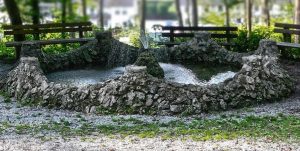 Beauty that brings you peace and tranquillity truly has no price. But nothing worth having comes easy, likewise maintaining such a beauty in the middle of your pond requires something from you.
Beauty that brings you peace and tranquillity truly has no price. But nothing worth having comes easy, likewise maintaining such a beauty in the middle of your pond requires something from you.
It asks that you make efforts, and learn things like how to reduce the flow rate of a pond pump, how to control the pond pump regulator, etc.
The waterfall pump does have a charm of its own, but you need to know something to get the best of it.
Good thing you ended up here since now you are leaving with all those answers and maybe some more. Hopefully, you will now be able to enjoy the beauty of a waterfall in your pond peacefully!
 Getting a water pump for your pond may be one of the best decisions you make for your pond. But for that, you need to at least be aware of the basics of the water pumps.
Purpose of a Water pump
There are two basic purposes of water pumps: aerations and decoration.
Aeration: The pumps that serve this purpose are built to re-oxygenate the water of the pond to keep it clean and fresh.
Getting a water pump for your pond may be one of the best decisions you make for your pond. But for that, you need to at least be aware of the basics of the water pumps.
Purpose of a Water pump
There are two basic purposes of water pumps: aerations and decoration.
Aeration: The pumps that serve this purpose are built to re-oxygenate the water of the pond to keep it clean and fresh.
 A waterfall pump at the side of the pond beautifully cascading water down the stream is an ideal of many pond owners, and why would it not be? The beauty and tranquillity that it brings are even enhanced by the aeration skills that it displays.
Water Discharge: A waterfall pump discharges water as a wide stream from a high point. This stream starts up top and beautifully pours down with grace and is collected at the lower point.
A waterfall pump at the side of the pond beautifully cascading water down the stream is an ideal of many pond owners, and why would it not be? The beauty and tranquillity that it brings are even enhanced by the aeration skills that it displays.
Water Discharge: A waterfall pump discharges water as a wide stream from a high point. This stream starts up top and beautifully pours down with grace and is collected at the lower point.
 A waterfall pump brings with it a feeling of lush, peace, and beauty. It brings coolness to the eye, ears, and mind. But in the event that you get a waterfall pump that is too fast for your pond, it can ruin the whole ambiance of the scene.
A waterfall pump that has a flow rate that is too strong for the pond can have a very unpleasant effect. Not only does it keep the water getting all stirred up, but also makes the water muddy and dirty which can cause a problem not just for you but also the fishes living in the pond. So it will have a two-fold negative impact.
A waterfall pump brings with it a feeling of lush, peace, and beauty. It brings coolness to the eye, ears, and mind. But in the event that you get a waterfall pump that is too fast for your pond, it can ruin the whole ambiance of the scene.
A waterfall pump that has a flow rate that is too strong for the pond can have a very unpleasant effect. Not only does it keep the water getting all stirred up, but also makes the water muddy and dirty which can cause a problem not just for you but also the fishes living in the pond. So it will have a two-fold negative impact.
 Beauty that brings you peace and tranquillity truly has no price. But nothing worth having comes easy, likewise maintaining such a beauty in the middle of your pond requires something from you.
Beauty that brings you peace and tranquillity truly has no price. But nothing worth having comes easy, likewise maintaining such a beauty in the middle of your pond requires something from you.
